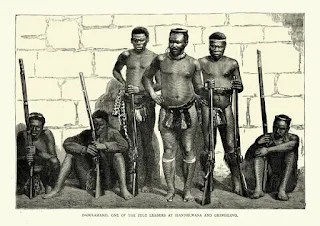🔴 North America: Africans were brought to North America, primarily to the British colonies that later became the United States. The slave trade to North America began in the early 17th century and continued until the abolition of slavery in the mid-19th century.
🟠 Caribbean Islands: Many Africans were transported to various islands in the Caribbean, including Jamaica, Haiti, Barbados, Cuba, and the Lesser Antilles. The Caribbean was a major hub of the slave trade, with large plantations relying on enslaved labor.
🟡 South America: Africans were taken to several countries in South America, such as Brazil, Colombia, Venezuela, and Suriname. Brazil received the largest number of African slaves, becoming the destination for approximately 40% of all slaves transported during the transatlantic slave trade.
🟢 Central America: Some Africans were also transported to countries in Central America, including Panama and Costa Rica, where they were used as laborers on plantations and in other industries.
🔵 Europe: Although the majority of enslaved Africans were sent to the Americas, a small number of them were brought to Europe. European countries such as Portugal, Spain, England, France, and the Netherlands were involved in the slave trade and had African slaves in their colonies or as domestic servants.
It is important to note that the transatlantic slave trade was a complex and multifaceted system, and the destinations varied over time. The dates of the transatlantic slave trade spanned from the 15th century to the 19th century, with the exact starting and ending dates varying depending on different factors such as the involvement of different countries, legal changes, and abolition movements.
How were the Africans dispersed during the transatlantic slave trade❔
During the transatlantic slave trade, Africans were dispersed through a systematic process that involved several stages. Here is an overview of how Africans were typically dispersed:
🟥 Capture and Enslavement: Africans were captured by various means, including raids, warfare, and kidnapping. African intermediaries, such as African slave traders or European traders collaborating with local African rulers, played a significant role in capturing and enslaving individuals. These captives were often held in slave forts or barracoons along the coast until they were ready for transportation.
🟧 Middle Passage: The Middle Passage refers to the journey across the Atlantic Ocean from Africa to the Americas. Enslaved Africans were packed onto tightly packed slave ships, often in horrific conditions. They were chained or confined in the ship's holds for several weeks or months, enduring cramped spaces, disease, malnutrition, and brutality. Mortality rates were alarmingly high during the Middle Passage due to these harsh conditions.
🟨 Auction and Sale: Upon arrival in the Americas, enslaved Africans were typically sold at slave markets or through auctions. Plantation owners, traders, and individuals seeking laborers would bid on the enslaved individuals. Families and communities were often separated as individuals were sold to different owners or locations. The auction and sale process further dispersed Africans to various destinations within the Americas.
🟩 Distribution to Plantations: Enslaved Africans were then transported to their final destinations, which could include plantations, mines, households, or other places where their labor was required. The distribution of Africans varied depending on the needs of the slaveholders and the economic activities of the region. They were often forced to work under brutal conditions, providing labor in industries such as agriculture (sugar, tobacco, cotton, etc.), mining, domestic service, and more.
Throughout this process, the dispersal of Africans was facilitated by European slave traders and various intermediaries involved in the transatlantic slave trade. The primary objective was to meet the demand for labor in the European colonies in the Americas, leading to the wide-scale displacement of millions of Africans from their homeland.








Comment your thoughts in the comments section Thanks 🙂💛🧡
ReplyDeleteI love the way you make use of easy topic related words it gives one a better understanding of your explanations🙏😊.
ReplyDelete💙
Delete